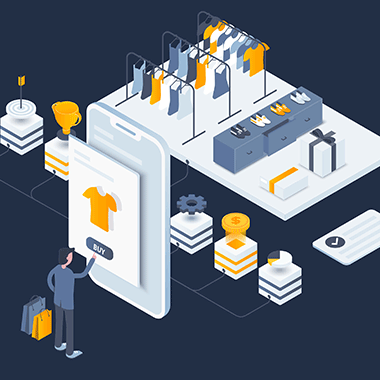If you’re like most of the brands and retailers we talk to here at Rithum, you’ve probably caught yourself wondering:
How can my company possibly get ahead of the competition when the e-commerce industry changes daily?
It’s a question we hear often. And believe it or not, there’s a surprisingly short answer:
Automation.
In many ways, this one-word strategy is like magic for e-commerce companies. The problem? Too often, e-commerce automation tools are overlooked and underused. Moreover, many companies simply hire more employees to fill the growing gaps created by increased manual work.
To help, we’ve pulled together three top ways to automate for e-commerce success.
Why Use E-Commerce Automation?
We believe every brand and retailer should be automating as many e-commerce activities as possible, for one very important reason: The more you automate, the more successful you can be. Automation frees you to focus on the things that matter most to your business and bottom line. And that, in turn, allows you to create intentional moments of influence for your consumers, at each and every stage of the buyer’s journey.
Ideally, e-commerce teams should be devoting the bulk of their time to high-value jobs that require creative abilities and strategic thinking. If your people are spending a lot of time on repetitive, time-consuming tasks, that’s a clear sign that it’s time to automate more day-to-day activities. You should also be seriously looking into automation if:
- You’re expanding your product line and looking to hire more people to handle the load
- Your growth and operational resource rates are parallel
In each of these scenarios, e-commerce automation can be your ticket to higher profit margins, lower costs and faster growth. With automated tasks securely in place and working 24/7, you’ll be free to focus on strategic initiatives and get ahead of your competitors.
3 Ways to Automate for E-Commerce Success
While you can (and should) make use of every automation tool at your disposal, it will take time in the beginning to get everything set up. To that end, it helps to prioritize. As you prepare to compete during the end-of-year holiday season, here are three of our top recommendations for e-commerce automation.
1. E-Commerce Automation for Marketing: Amazon Advertising
If there’s one marketing activity every brand and retailer needs to participate in, Amazon Advertising would be it.
Most online sellers know this, of course. What many may not realise is just how much of that advertising can be automated. When setting up your Amazon Sponsored Products and Sponsored Brands campaigns, an automation tool can be incredibly valuable for bidding, making bulk changes and more.
So, how does Amazon Advertising automation work? It all depends on your goals. When the objective is to generate high-volume sales and increase Buy Box potential, you can use a specific set of automation rules to optimise bidding for a greater return on ad spend (ROAS). At other times, when higher profit margins are the goal, a different set of rules can be put in place to boost your cost per order (CPO) or advertising cost of sales (ACoS).
Once you get comfortable with automating your Amazon Advertising campaigns, you’ll find there are countless ways to achieve any number of objectives.
2. E-Commerce Automation for Selling: Pricing Strategies
If there’s one challenge all marketplace sellers face, it’s product pricing. Price an item too high, and you’ll get beat out by competitors. Drop it too low, and you may not only lose out on profit margins but also risk breaking critical pricing policies and agreements.
For all of these reasons, having an automated pricing strategy is a must. Want to win more of the buy box at the highest price possible? Set up algorithmic repricing. Need a better way to match what competitors are doing? Use rule-based automation to have a product’s price automatically adjusted based on your desired minimums and maxes. Looking for a way to more easily meet pricing policies and agreements? Use a Price Manager tool to ensure consistency across marketplaces and webstores at all times.
No matter which pricing automation methods you use, the endgame is the same: You’ll position your products to gain more visibility across more channels, without adding more work or putting you at risk of violating compliance agreements.
3. E-Commerce Automation for Fulfilling: Forecast Demand
Whether it’s taking up space at your own warehouse or sitting in a third-party fulfilment centre, inventory overstock can get costly. Problem is, consumer demand changes constantly. Which can make it incredibly difficult to plan the right amount of inventory for upcoming selling seasons.
This is another area where e-commerce automation comes in especially handy. Rather than aggregating data manually and slogging through in-depth analysis (or, worse yet, relying on “best guesses” and gut instinct), you can use a strategy called demand forecasting. This type of automation pulls from billions of dollars worth of historical and seasonal data across thousands of sellers to provide a precise snapshot of where consumer demand currently stands.
Demand forecasting is high on our list of automation techniques because, in addition to significant time savings, it can help you steer clear of over- and understocking during peak seasons.
In Conclusion: The more e-commerce tasks you automate, the better positioned you’ll be to expand your business and soar past competitors. It really is as simple as that. And the three suggestions above are just a start. From scheduling cross-channel promotions to automating reorders, there are countless ways to optimise your operations and free yourself to focus on the things that matter most to your bottom line.



